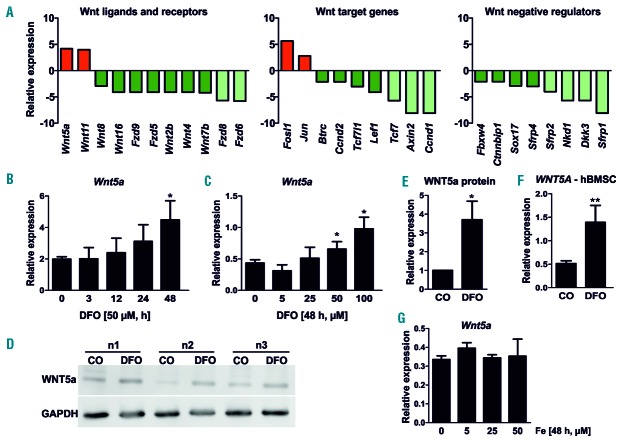Figure 3.
Deferoxamine (DFO) modulates the expression of components of the Wnt pathway. (A) Bone marrow stromal cells were differentiated towards osteoblasts for 10 days and treated with 25 μM DFO for 48 hours. A Wnt profiler polymerase chain reaction (PCR) array was performed using real-time PCR. Genes are separated into three categories: Wnt ligands/receptors, Wnt target genes and Wnt inhibitors. Genes in green indicate down-regulated genes (lighter green means more intensively down-regulated); red ones are up-regulated. All genes presented in the bar graph were significantly regulated (P<0.05). N=3. (B–C) Day 10 differentiated cells were stimulated with various concentrations and durations of DFO. Afterwards, Wnt5a expression was determined using real-time PCR. N=4. (D–E) Western blot analysis of WNT5a in osteoblasts after DFO treatment (25 μM) for 48 hours. Three independent experiments are shown. Graph indicates quantification experiments using ImageJ. (F) Human bone marrow stromal cells (hBMSCs) were obtained from healthy donors and differentiated towards osteoblasts for 10 days. Afterwards, cells were treated with Fe (iron chloride) (5 μM) or DFO (25 μM) for an additional 48 hours to assess WNT5a expression using real-time PCR. N=4. (G) Murine bone marrow stromal cells were differentiated towards osteoblasts for 10 days and treated with 5–50 μM FeCl3 for 48 hours. Afterwards, Wnt5a expression was determined using real-time PCR. N=3. *P<0.05, **P<0.01 vs. control (CO).

